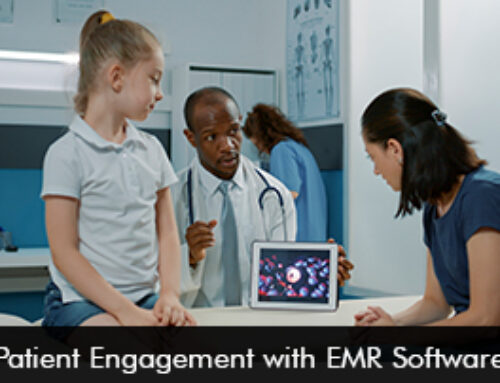During the COVID pandemic, many practices had no choice but to switch to some form of virtual care. This forced the industry to explore a somewhat unknown technology since there were many questions, such as whether care could be given properly when not in the same room as the patient.
It has since been reported that 38% of care is still delivered digitally and is only expected to increase, even despite its initial spike. It’s safe to say that the industry has adapted and it’s now more apparent than ever what benefits telehealth brings and how important flexible healthcare is.
Benefits of Telehealth
It’s clear that telehealth brings many conveniences and advantages to delivering care. Whilst it doesn’t completely remove the need for in-person examinations, many types of visits can be dealt with virtually. Other advantages include:
- Comfort and convenience
- Control of infectious illness
- Better assessment
- Email and text reminders
- Patient portal
- Virtual visits
Tips to improve Telehealth Session
Given the many benefits telehealth EMR software can bring, there are still some things that should be avoided in order to ensure that the potential of a telehealth visit is always maximised.
Have a dedicated quiet office space
One point is to keep privacy and trust, between the practitioner and patient, by having a dedicated and quiet space background. Having too much in the background, such as other colleagues or a busy workplace, can be distracting. By avoiding these practitioners can avoid any privacy infringements and keep the focus of the visit.
Avoid technical issues
Clear communication is key to any telehealth visit. The last thing practitioners need is for something out of their control to hinder the progress of a patient visit. Prior to any video conference, switching to a wired connection (rather than wireless) can stabilize an internet connection, whilst also preventing outages or lag. Another consideration could be a better-quality microphone or webcam, to avoid unclear speech or video.
Make it easy for patients
It’s important to accommodate to patients’ needs as much as possible. Practitioners can give the patients different options on how to connect and allow them to pick the most convenient option for themselves. Most appointment reminder EMR software can also add reminders to their calendars, send links to their emails or even send texts straight to their phones – allowing for much easier access to the meeting.
Additionally, clinicians should try to explain things clearly to the patient and answer any questions, to keep the patient engaged and reduce up any anxieties they might have. Patients should be able to contact their physicians easily through email, SMS, or even via patient portal EMR software.
Follow all billing guidelines
All telehealth billing guidelines should always be followed. Making sure everything is documented correctly, allows practitioners to receive appropriate and timely pay.
Future Trends in Telehealth
Since its adoption, there have been clear trends in the telehealth space that can potentially innovate modern healthcare.
The recent release of Google’s Pixel Watch, and even Apple’s new generation Apple Watches, has allowed patient information to become far more accessible to doctors and nurses than ever. More ‘wearables’ are implementing more features and only show signs of becoming more powerful.
With wearable technology, investments and improvements being made to data sharing and interoperability, telehealth has the potential to further innovate care delivery.







